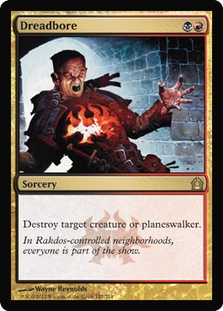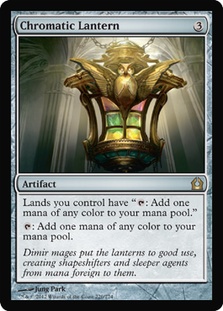Return to Ravnica is among modern Magic’s most anticipated set releases of all time. From the moment it was announced, players have anxiously waited to see what Wizards of the Coast would do to breathe new life into what many regard as one of the best blocks for Limited and Constructed the game has ever seen.
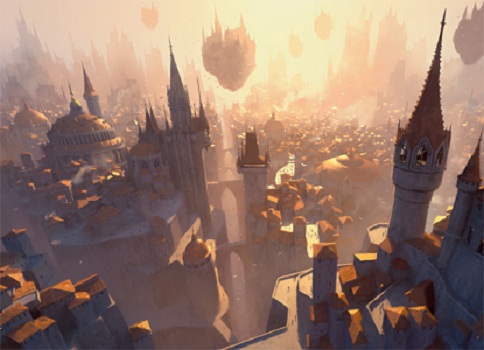
Released in the wake of three of Magic’s most flavorful and powerful blocks, I was a little worried that the newly revisited Ravnica may not be able to deliver. From the moment the first card was spoiled and every card thereafter, I found myself singing praises of all the wonderful flavor and design of each card. With every new preview my mind danced at the thought of building a deck around it or including it in one of my cubes. It’s safe to say that Return to Ravnica has met and exceeded my expectations.
Return to Ravnica has revitalized five of the original ten guilds with a new set of mechanics, a new cycle of dual lands, and the return of the ever-popular ‘shocklands.’ It’s an incredibly deep set with a lot of moving parts. You know those sneaky cards you can’t quite put your finger on whether they’re good or not because you have no context or substitutes? It has a lot of those. Of course, the new set has a wide variety of treasures to offer casual and competitive formats, but we’ll leave that to the experts. Let’s talk about what Return to Ravnica means for Cube!
Author’s note: Unlike more widely supported formats like Standard or Legacy, which are familiar to most Magic players, even many experienced players haven’t had the pleasure of cube drafting. If you’re one of those who hasn’t played the format before, I encourage you to read up on cube drafting by visiting the resource links at the end of the article. Feel free to ask any questions you have about building or playing a cube by leaving a comment or sending me a note on Twitter.
Trimming the Guilds
A cube design principle we’ve seen catch on in the last couple years is the move away from supporting large multicolor and fixing sections and instead putting more emphasis on supporting archetypes or themes. To illustrate this shift, I dug up one of the first-known copies of my cube spreadsheet. My multicolor section in early drafts of my list comprised a whopping 15% of my cube. That’s 80 cards out of 535 total cards. That’s fifteen cards more than any other individual color had! Today that number is about 6.5%, where there are fewer multicolor cards than any other single card type (40 cards out of 600, or about four cards per guild). I’ve seen this trend unfold among my friends and fellow cube designers. The bottom line is that people just aren’t playing as much multicolor these days.
What changed?
It’s possible people were getting sick of seeing fringe multicolor cards table. Perhaps the manafacts are becoming fewer and fewer as cubes like the one on Magic Online become more popular and including cards like Signets falls out of favor. After all, it’s pretty difficult casting three-color cards if you don’t have the fixing to support them. Maybe it’s simply the fact that mono-color cards keep getting better and Wizards continues to print more and more of them with every set. In any case, it’s safe to say that lately most fine-tuned lists look to the multicolor section when it comes time to make room for a new addition.
Enter Return to Ravnica.
Weighing in at an enormous 84 multicolor/hybrid cards, Return to Ravnica has just over half as many multicolor cards as Alara Reborn, Magic’s only all multicolor set ever printed! Given that the Return to Ravnica world is also the flagship of WotC’s current marketing efforts and has tremendously high expectations, it comes as no surprise that a good percentage of these cards are cube-able. We’re talking staple-level playables here.
The revisted Ravnica block brings to light a very interesting dichotomy in cube design between creating a sexy and sleek cube format and maximizing out on fun but often clunky multicolor cards. The good news is that the power level of some of the spoiled cards isn’t just your run-of-the-mill Limited-only fodder. There are some very serious role-players that can help give definition to individual guilds and archetypes. On top of all the craziness of the newly spoiled cards, we have to remember we have the other five guilds coming this winter. As a cube designer, you have to decide which direction you want to take your cube. Do you increase your multicolor and fixing sections to allow for more multicolor decks and splashes, or do you maintain your current configuration? Â
Finding a Balance
Everyone has their own method for classifying and evaluating multicolor and hybrid cards. The most conventional method is to simply put the hybrid and multicolor cards in a ‘guild’ section, which is usually balanced to include a fixed number of cards for each guild. You may find designers include cards like Orim’s Thunder or Dismantling Blow as white cards or in their respective guild sections. Engineered Explosives, Gavony Township, Kird Ape, and Wild Nacatl are also frequently classified as multicolor cards given that they’re nearly useless as colorless or single-colored cards.
I recently adopted a system which takes hybrid cards completely out of multicolor and places them in colors in which they see more maindeck play. Fulminator Mage, for example, sees far more play as a red card than a black card. For all intents and purposes, Boggart Ram-Gang is a red card. Cards like Figure of Destiny and Kitchen Finks bend this rule a bit given how flexible they are in each color. I put these in the colors which need the extra slot. Red, for example, may have a free slot, whereas white has a few cards at 1CC waiting on the bench.
My reasoning for this system is to reserve the multicolor section for cards which absolutely cannot be played without access to an additional color or some other means like Reanimate or Tooth and Nail. This lets me look at my multicolor and land sections to get an idea of the likelihood to see a particular color combination. It helps me determine if I need to include lands like Krosan Verge or off-color Signets. Given how small my multicolor section is right now, it also helps me keep things lean enough to allow niche strategies to thrive in a larger cube environment.
Say you have a five-card W/G section but want to make room for some of the newly spoiled cards. Let’s look at an example W/G configuration to see how reclassifying hybrids might help us find room:
Loam Lion
Kitchen Finks
Mirari’s Wake
Qasali Pridemage
Sigarda, Host of Herons
Here are the cards we want to try to add:
Selesnya Charm
Dryad Militant
Armada Wurm
Sundering Growth
Based on the current multicolor convention of keeping the gold population small and contained, the list above is a pretty tall order to fill. Dryad Militant is likely the only card in the list that would be considered ‘staple’ material. The others would be a matter of preference. In this case, the easy swap would be to simply cut Loam Lion for the Militant. That leaves us pitting Sundering Growth and Selesnya Charm against Qasali Pridemage and Sigarda against the Wurm. Of course, one option is to simply pump our multicolor section up by four and call it a day, but we don’t have the full block so we’d have unbalanced guilds, not to mention we’d have to amp up our fixing. While I believe this may ultimately be where Gatecrash takes us when it’s released, for now I have a more creative way of getting around this. Incidentally, the method I propose should prepare you to manage larger multicolor sections once Gatecrash goes live.
When people first saw Shadowmoor, they thought, "Hey, look, multicolor cards!" In fact, the entire block wasn’t really built to support multicolor strategies, but quite the opposite. Hybrid is built to allow you to play a card that may fit the theme of both colors but is flexible enough to play in either. My definition of a multicolor card is one that absolutely requires you to be playing both colors to play the card for its mana cost. This includes lands like Gavony Township.
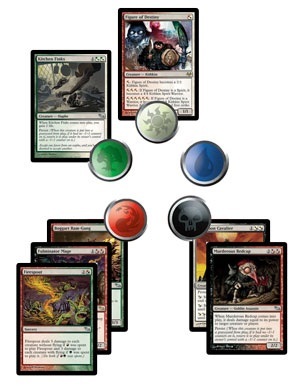
To go back to an earlier example, in my cube Fulminator Mage plays out more like a red card than it does a black card. You could remove the ability to cast it for 1BB and it’d still be a fine cube card. Reclassifying it may feel a little like cheating, but at the end of the day we’re talking about reclassifying about 1% of your cube when you move your hybrid cards. I’ll argue that this is statistically insignificant and the benefits of having access to the new multicolor cards from Return to Ravnica will outweigh whatever negative effects (if any) there are to moving hybrids to mono-color sections. Context always helps. So let’s look at the actual changes I made to my list to illustrate how this affects my current multicolor section.
Kitchen Finks — Moved to green
Stillmoon Cavalier — Moved to black
Boggart Ram-Gang — Moved to red
Fulminator Mage — Moved to red
Figure of Destiny — Moved to white
Firespout — Moved to red
Murderous Redcap — Moved to black
What did I actually accomplish by doing this? Assuming my guild section is five cards per color combination, we’ve essentially freed up seven slots across all ten guilds. Of course, with every action there are consequences. By doing this, I had to free up slots in each color. This is actually easier than you might think. You just need to ask yourself a few questions. Is this card appropriate for this color? Are there better options? In the case of cards like Figure of Destiny and Ram-Gang, this shouldn’t be a problem. Just find cards that you feel are marginalized by their inclusion and call it a day.
In some cases, you may find yourself questioning whether you should be running a card in the first place. In my list, for example, is Firespout really any better than something like Slagstorm (not in my list)? Similarly, if I had both Slagstorm and Firespout in my list, at that point am I really running Firespout to serve a purpose or is it there to fill space in the guild but is simply outclassed by other options? In many ways, reclassifying hybrids as mono-color cards should make your list leaner than putting them in multicolor sections.
The example above illustrates exactly why I won’t advocate outright increasing multicolor sections until after Gatecrash. If you find yourself thinking you wouldn’t run a card on merit alone, keep the fact that it’s a hybrid card in mind. Redcap may seem like a poor Flametongue Kavu replacement, but the ability to play it outside of where we’ve classified it in our list is a nice bonus. I find that treating hybrids as mono-color cards allows me to be more flexible and ultimately helps to balance my list better than when they were in the multicolor section. It’s hard to say how many more hybrid cards we will see beyond the new Ravnica block, but given that this is the fourth block we’ve seen hybrid mana costs in, it’s probably better to have a system than no system.
Now that we’ve moved our current hybrid cards, let’s see where that leaves us for adding the Selesnya cards to our list.
Selesnya Charm — We freed up the Kitchen Finks spot, and the Charm is versatile enough that I am comfortable with it taking its place.
Dryad Militant — Under our new classification policy, this should be placed in the most appropriate color. Given how little play green-based aggro gets in my list, this is a natural fit for my white section. I simply benched another one-drop to make room for Militant.
Sundering Growth — Prior to Return to Ravnica, I ran both Dismantling Blow and Disenchant in the white section. White probably has the most to gain with the populate clause on Growth, so displacing one of the older Disenchant effects is the most likely scenario. If you find yourself not wanting to crowd white with too many hybrid cards, feel free to cut a card like Beast Within or Krosan Grip from your green section.
Armada Wurm — Now we finally get to pit a new multicolor card against the original lineup. Remember, at this point we have five cards in our G/W section. My advice here would be to pick the card which is least played or has the least value to your cube. I believe a card like Loam Lion isn’t very unique and doesn’t provide near the punch that Armada Wurm does, so for me that would be the cut.
Rinse and repeat this process for each section. If you find yourself faced with having to wedge in cards for one of the unspoiled guilds, don’t be afraid to simply leave the spots vacant or pull a few multicolor cards until the time comes.
I don’t want to do it your way. What are my options?
Hybrid reclassification is really just optics. It feels a lot like leasing a car. The salesman will tell you that you can get lower payments but they’ll need a bigger down payment and vice versa. I’ll contend that classifying hybrids as multicolor cards just isn’t efficient. I want to put cards in places where they’re appropriate or where they get played most. In many ways, these cards are more like split cards than multicolor cards.
When balancing your multicolor section, be sure to take into account access to fixing and whether it’s in a color’s identity to be played in multicolor decks. Blue, for instance, is a good splash color for draw spells, and black and red offer good options for burn and removal. White and green, however, are usually poor splash colors. When multicolor cards come along that are either very powerful or unique (few substitutes), they should be considered for inclusion. Just make sure that they align with the color’s strengths and weaknesses. If you’re someone who manages a list with a big multicolor section already (6-8 cards per guild), you shouldn’t have trouble adding and cutting cards to make room. You know your list better than anyone else and this probably isn’t your first rodeo. Just do what you do within the constraints of your own design criteria and go from there.
On Second Thought
As it turns out, the multicolor cards in Return to Ravnica are both fun and better than your run-of-the-mill Commander fodder. I have no doubt we are going to see a lot of head scratching as designers find ways to wedge some of these great cards into their lists.
If we continue to get quality aggro creatures in multicolor and great mana fixing like we have the last few years, we may see a shift away from conservative management of multicolor. I don’t think it’s unfair to assume Gatecrash will affect Cube in the same way as Return to Ravnica. It’s another large base set that is presumably designed similarly to Ravnica, which means we’ll have another 3-5 possible cards for each guild. We’ve already looked at hybrid reclassification as a way to free up space. The other options are to simply pull back more mono-color cards or increase the size of your cube.
Multicolor should be directly proportional to fixing. If you’re going to add a bunch of cards that have off-color mana costs or activations, you need to provide the tools necessary to play these cards. Failure to do this will result in poor adoption and will ultimately find those cards phased out. There are a few things you can do to prevent this.
Manafacts — Many cubes are phasing out Signets and other manafacts. There are various reasons for doing so, but I’m not here to debate the subject. Colorless ways to produce multiple different mana is a great way to help promote multicolor decks. If the multicolor cards you’re adding are aggro-oriented, then adding Signets will likely not help. Assume that all non-0CC mana artifacts will be going to support midrange and control strategies.
That said, if after Return to Ravnica you find yourself with a bunch of big, midrange cards in your Rakdos section, consider playing Rakdos Signet as a way to support those strategies. If the cards in your Rakdos section are more aggro-oriented, then look to lands as a way to help support those cards. I am a huge fan of the five-color artifacts like Chromatic Lantern, Coalition Relic, Prismatic Lens, and Darksteel Ingot. If you plan on playing slower wedge or five-color cards, then these artifacts will go a long way in helping you to support that strategy.
Lands — Lands are a very tricky beast in Cube. If you have too many, you will water down your draft and may enable too many ho-hum five-color decks. If you have too few, aggro suffers and you dull the format by not allowing various off-color decks to come together. Assuming you had a reasonable land configuration prior to Return to Ravnica and you’re looking to increase your multicolor footprint, I would suggest looking at lands that help fix but are archetype-agnostic. Here are some cycles to look at:
10 Original dual lands
10 Fetchlands
10 Shocklands
10 Bouncelands
10 Return to Ravnica Guildgates
10 Shadowmoor filter lands
5 Scars of Mirrodin fastlands
5 Core set dual lands
5 Innistrad dual lands
5 Shards of Alara trilands
5 Vivid lands
5 Worldwake manlands
Don’t be afraid to break up the cycles up to help support particular color combinations. In my list, for example, I have a strong mono-black presence. I choose to include lands like Urborg and all of the black-based Shadowmoor filter lands. There are also plenty of five-color lands like City of Brass, Terramorphic Expanse, Grand Coliseum, and Gemstone Mine to consider. As a rule of thumb, I would try to add an additional land for every 2-3 multicolor cards added. Don’t be afraid to experiment. You can pull back fixing easier than probably any other card type. While it has a huge effect on the draft, it has much less effect on the archetypes and strategies you support than if you were to cut a full cycle of a particular archetype like Reanimator or burn.
Five-Color Green — Another option to promote multicolor is to empower specific colors to be good at fixing. Green has always been known as the five-color set for as long as I’ve been playing Magic. If you want green to play this role, you will want to include the full suite of mana dorks and ramp effects that fix multiple colors of mana. This also means that your multicolor cards with green in them should support this strategy. Creatures like Loam Lion and Kird Ape lose a little stock, while cards like Knight of the Reliquary and Mirari’s Wake increase in value. Green isn’t the only color that can play this role. Including a lot of artifact mana can allow blue decks to play a similar role.
Part of me hopes that Return to Ravnica will bring about a new age of cube design in which we drastically increase the size of our multicolor sections. Assuming the number of multicolor cards in this block pushes cube designers to increase multicolor sections by even a few percent, that’s going to fundamentally change our lists. I am really looking forward to what is in store for us because I don’t think it’ll be as simple as swapping out cards in our lists for the new digs.
Thanks for reading! Feel free to find me on Twitter or leave a comment here. I’d love to look at your list to help you find room for all the great new cards from Return to Ravnica!
Matt "Kranny" Kranstuber
@kstube on Twitter
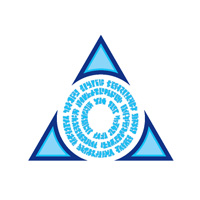 |
In the weeks leading up to banned and restricted announcements, my friends and castmates frequently refer to me as Matt Banstuber. I’ve been known to hone in on cards which seek to threaten the stability and balance of our favorite Constructed formats. Keeping true with this dogma, when a format solves itself and deters creativity, I will seek to remove cards to restore the rule of law. It seems only fitting that my favorite format is cube. I am the sole protector and judge of my realm. I am a member of the Azorius Senate, and I am tasked with the order Ravnica. |

